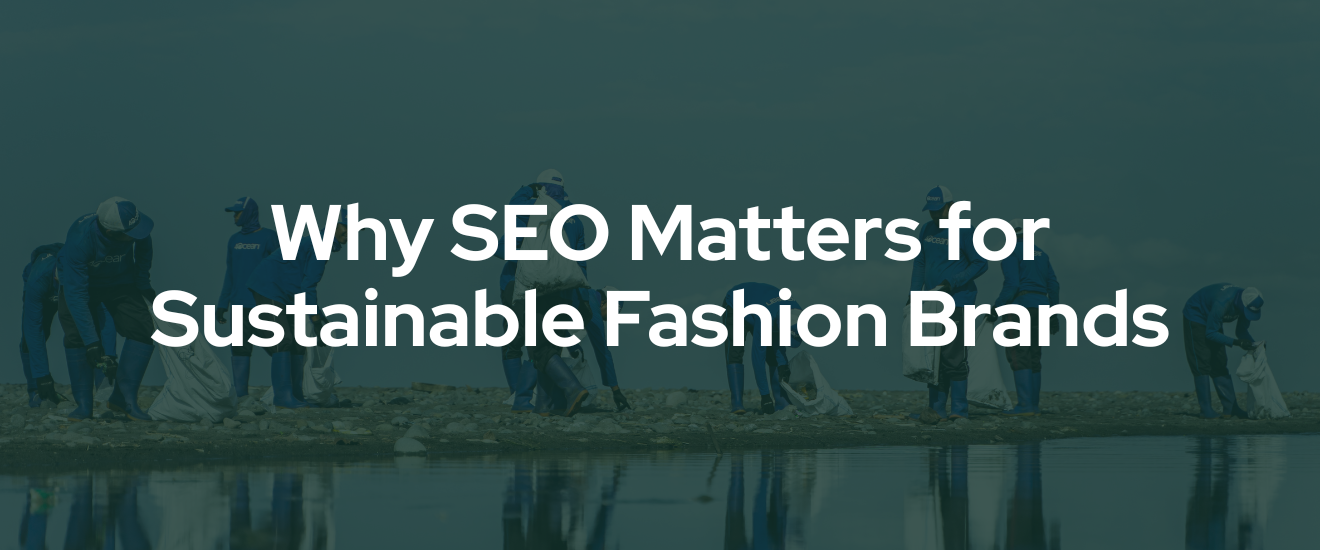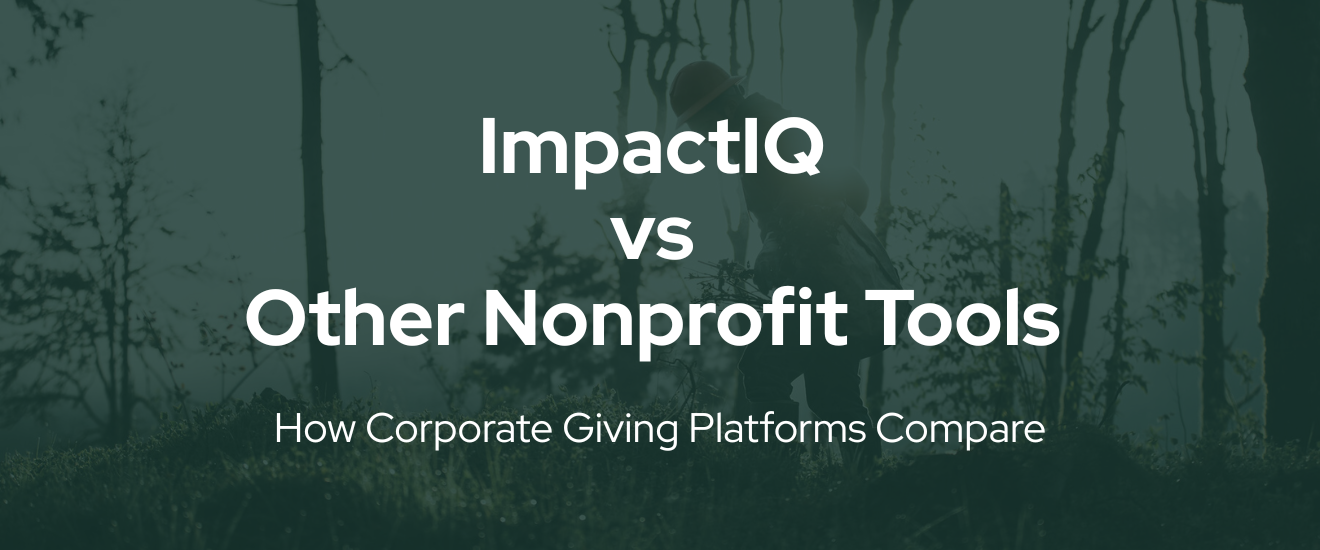Why SEO Matters for Sustainable Fashion Brands
A strategy guide with real keywords, blog topics, and tools for growth
Sustainable fashion is growing fast—but so is the competition.
Every day, new brands launch with recycled fabrics, ethical production, and a values-driven mission.
The challenge? If people can’t find you online, it doesn’t matter how eco-friendly your products are.
That’s where search engine optimization (SEO) comes in.
This guide breaks down exactly how sustainable fashion brands can use SEO to attract conscious shoppers, grow traffic, and build long-term visibility.
We’ve included real keywords to target, blog post ideas, and tools you can use to start optimizing today.
Why SEO Is a Growth Channel Fashion Brands Can’t Ignore
The people you want to reach are already searching for things like:
- “best sustainable activewear”
- “where to buy ethical jeans”
- “organic cotton hoodie brands”
- “slow fashion brands in the US”
If your brand doesn’t show up, they’ll land on a competitor’s site instead.
SEO gives you the ability to:
- Own high-intent traffic without paying for ads
- Capture long-tail searches that drive more qualified clicks
- Build content that compounds over time (instead of disappearing after 24 hours like social posts)
And in a visual-first category like fashion, rich, searchable content can outperform flashy paid campaigns when done right.
5 SEO Content Buckets That Work for Sustainable Fashion Brands
1. Product-Focused Blog Content
Go beyond your product page and create blog content around what customers are searching for.
Examples:
- Best Organic Cotton Tees for Summer
- Why We Chose Hemp for Our Latest Collection
- How to Wash and Care for Recycled Polyester
- Comparing TENCEL vs. Bamboo: What’s More Sustainable?
Keywords to include: sustainable clothing, eco-friendly fashion, organic fabrics, ethical materials, best fabrics for hot weather, slow fashion tees
2. “How-To” Guides That Solve Customer Problems
These help shoppers understand how to live more sustainably—and how your brand fits in.
Examples:
- How to Build a Capsule Wardrobe with Sustainable Basics
- How to Spot Greenwashing in the Fashion Industry
- How to Travel Light with Ethical Essentials
- How to Recycle Old Clothes Without Sending Them to Landfill
These guides perform well because they solve real problems and often get shared, saved, and referenced.
3. Trend-Driven SEO for Conscious Shoppers
Use SEO to connect with customers during shopping seasons or cultural moments.
Examples:
- Sustainable Fashion Trends to Watch in 2025
- Best Ethical Outfits for Festival Season
- Eco-Friendly Gifts for Fashion Lovers
- Back-to-School Shopping with a Sustainable Twist
Keywords: sustainable fashion trends, ethical gifts, eco-friendly outfits, sustainable shopping guide
Add monthly or seasonal blogs to your calendar to capitalize on intent during key periods.
4. Brand Purpose and Impact Blog Posts
Fashion shoppers care about who they buy from—not just what they buy. So make your mission visible.
Examples:
- Why We Partner with Ecodrive to Plant Trees With Every Order
- Inside Our Factory: How We Ensure Ethical Production
- Where Our Fabrics Come From (And Why It Matters)
- What Sustainable Fashion Means to Us
These pages allow you to target keywords like: carbon-neutral clothing, ethical production, brands that plant trees, sustainable factories, circular fashion
And they double as trust-builders for first-time buyers.
5. Educational & Evergreen SEO Content
These are long-form guides that explain complex topics and bring in ongoing traffic.
Examples:
- What Is Sustainable Fashion? A Beginner’s Guide
- The Environmental Cost of Fast Fashion
- How to Transition Your Closet to Ethical Brands
- 15 Fashion Certifications Explained (GOTS, Fair Trade, OEKO-TEX, etc.)
These posts rank well for months or years—and position your brand as an authority in the space.
Fashion-Specific Keywords to Target
Here’s a mix of short-tail and long-tail keywords that can help guide your content:
Product terms
- sustainable activewear
- organic cotton shirts
- recycled polyester hoodie
- hemp clothing brand
- vegan leather jackets
Buyer intent
- best ethical fashion brands
- where to buy sustainable clothes
- clothes made from ocean plastic
- affordable slow fashion brands
Impact terms
- tree planting fashion brand
- eco-friendly packaging for clothing
- circular fashion
- ethical production vs fair trade
- climate-neutral fashion companies
Use these keywords in your:
- Blog titles and headers
- Meta descriptions
- Product descriptions
- Internal links
- Category pages and landing pages
3 Quick SEO Wins for Fashion Brands
1. Turn Impact Into Evergreen Blog Content
If you partner with Ecodrive or another impact platform, write dedicated blog posts for each project:
- “Why We Plant Trees in Oregon”
- “Our Ocean Plastic Removal Campaign: The Results”
- “How We Support Reforestation Through Your Orders”
2. Add SEO-Optimized FAQs to Product Pages
Include answers to common questions like:
- “Is this fabric biodegradable?”
- “How should I wash it to reduce microplastics?”
- “What does GOTS certified mean?”
3. Create Internal Linking Between Products and Content
For example:
- A blog about “What Is Recycled Polyester?” can link directly to your recycled collection.
- Your “Capsule Wardrobe Guide” can feature 5 products from your latest launch.
This improves SEO and helps move customers from education to purchase.
Final Thoughts
SEO is a long-term investment—but one of the most valuable tools a sustainable fashion brand can use to reach conscious consumers.
By creating content that’s relevant, searchable, and aligned with your values, you can:
- Increase organic traffic
- Educate your audience
- Drive more qualified sales
- Build lasting authority in your niche
Whether you’re just getting started or looking to scale, SEO can work hand-in-hand with your brand’s mission.
And if you want to amplify that impact through real-world action, platforms like Ecodrive can help you link every order to verified environmental change—while giving you the content and data to support your SEO strategy too.












